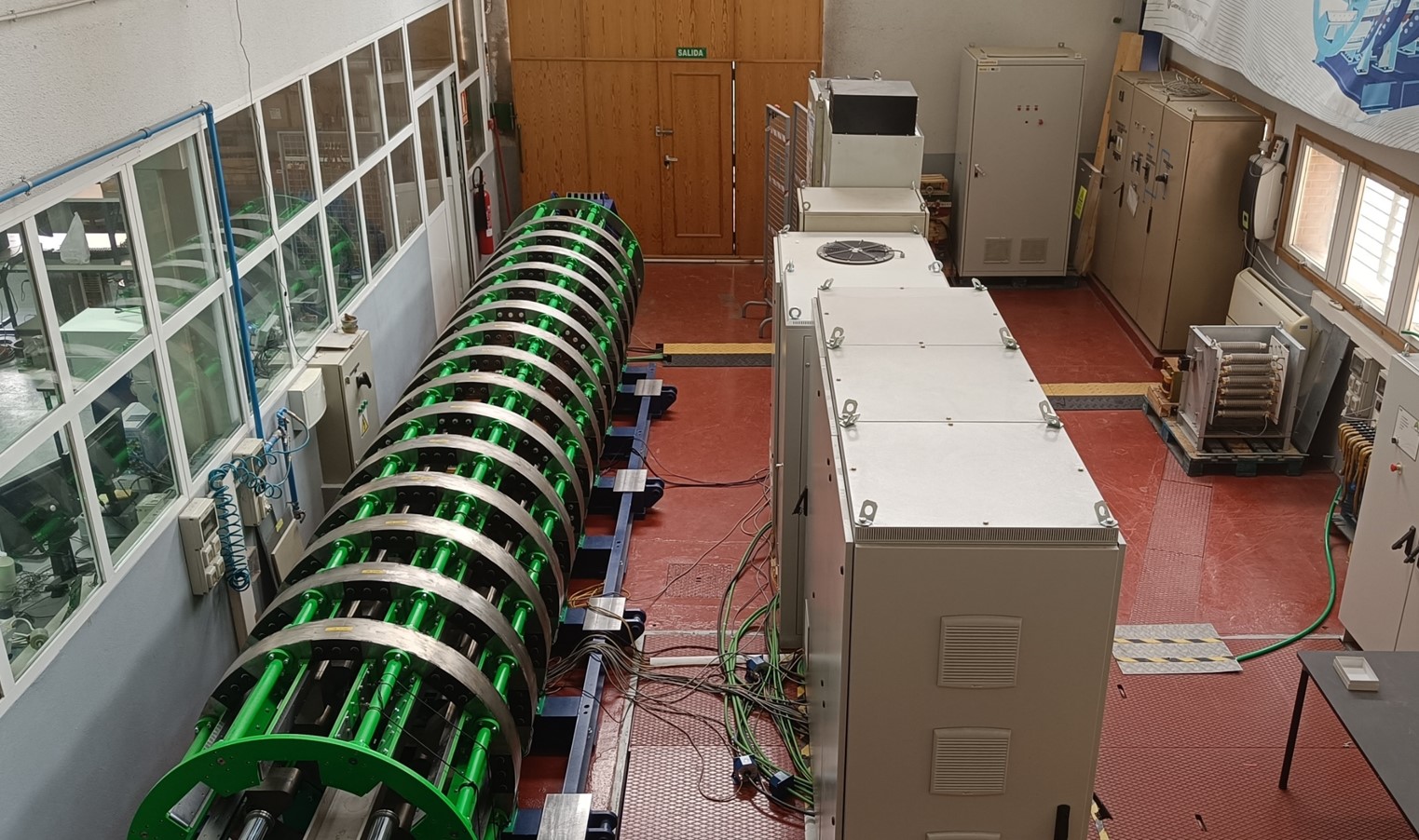A Novel proposal of PTO direct-drive linear generator, an Azimuthal Multi-translator Switched Reluctance Machine (AMSRM): mechanical, characterization and performance tests.
DOI:
https://doi.org/10.36688/ewtec-2023-308Keywords:
PTO, linear electric generator, dry testsAbstract
Research and development on power take-off (PTO) in wave energy has been gaining relevance in recent years, appearing as a priority in various forums (JCR reports [1], SRIA in wave energy development [2], specific research funding program in WES, etc.).
The new proposal of a linear electric generator to act as a PTO in wave energy extraction applications has been developed in the European project SEATITAN [3].
The linear generator is based on a switched reluctance machine type topology in which the magnetic flux is azimuthal. This allows eliminating the yoke, reducing the amount of magnetized material needed and increasing the force density, besides having a cylindrical shape that allows adapting perfectly to the spar of point absorber type WECs.
The Azimuthal Multi-translator Switched Reluctance Machine (AMSRM) has been developed, designed and a prototype has been manufactured in the project. The prototype is composed of two modules of 35 kN of force and 3 m/s of peak velocity.
The complete manuscript will detail the testing facility, as well as the tests performed for the static characterization of the force, electrical losses, and air gap achieved during manufacturing, as well as the dynamic characterization of frictional losses and a preliminary setting of force control parameters.
The dry test facility (figure 1) consists of the necessary electronic converters to conveniently operate the generator and impose a reference force controlling current per generator coil. In addition, an end-stopper is provided to ensure the safety of the tests (this equipment is essential for dynamic tests). For static tests, a load cell for force measurement as well as precision electrical power meters are used.

A test protocol has been defined for each test, as well as an analysis procedure to obtain the required results: for example, for the evaluation of friction, dynamic tests based on a back-and-forth motion with drifting sections are proposed to evaluate the braking force with the generator off at various speeds.
The description of the test protocol, the raw data obtained, the data analysis carried out, and de results obtained will be presented and detailed in the manuscript, as well as the description of the test-based parameterization of a simplified AMSRM model to be used in the dynamic modeling of WECs. The simplified model has been previously developed and presented in EWTEC 2021.
[1] D. Magagna, R. Monfardini, and A. Uihlein, “JRC Ocean Energy Status Report 2016 Edition,” 2016
[2] J. L. Villate et al., “Strategic Research and Innovation Agenda for Ocean Energy,” Etipocean, no. 826033, p. 64, 2020.
[3] WEDGE GLOBAL, “SeaTitan,” 2018. [Online]. Available: https://seatitan.eu/. [Accessed: 29-Nov-2021].
[4] Marcos Blanco, Miguel Santos‐Herran, Gustavo Navarro, Jorge Jesus Torres, Jorge Najera, and Luis García-Tabarés, “Simplified model of a novel direct-drive PTO based on an azimuthal linear switched reluctance generator,” 2021.
Downloads
Published
Issue
Track
Categories
License
Some rights reserved. Please see https://ewtec.org/proceedings/ for more details.

